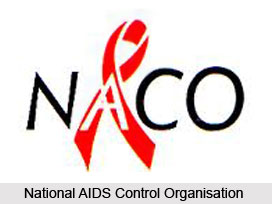 NACO is an autonomous body of the Union Government which is dedicated towards providing quality care to every person living with HIV in India. Effective prevention, care and support for HIV/AIDS is the prime purpose of the NACO. NACO has taken measures to ensure that people living with HIV have equal access to quality health services. By fostering close collaboration with NGOs, women`s self-help groups, faith-based organisations, positive people`s networks and communities, NACO hopes to improve access and accountability of the services. It stands committed to building an enabling environment wherein those infected and affected by HIV play a central role in all responses to the epidemic - at state, district and grassroots level.
NACO is an autonomous body of the Union Government which is dedicated towards providing quality care to every person living with HIV in India. Effective prevention, care and support for HIV/AIDS is the prime purpose of the NACO. NACO has taken measures to ensure that people living with HIV have equal access to quality health services. By fostering close collaboration with NGOs, women`s self-help groups, faith-based organisations, positive people`s networks and communities, NACO hopes to improve access and accountability of the services. It stands committed to building an enabling environment wherein those infected and affected by HIV play a central role in all responses to the epidemic - at state, district and grassroots level.
NACO provides people with accurate, complete and consistent information about HIV, promote use of condoms for protection, and emphasise treatment of sexually transmitted diseases. NACO believes that people need to be aware, motivated, equipped and empowered with knowledge so that they can protect themselves from the impact of HIV.
Objectives of NACO
The objectives of NACO are as follows:
1. Building an integrated response by reaching out to diverse populations.
2. A National AIDS Control Programme that is firmly rooted in evidence-based planning.
3. Achievement of development objective
4. Regular dissemination of transparent estimates on the spread and prevalence of HIV/AIDS
5. Building an India where every person is safe from HIV/AIDS
6. Building partnerships
7. An India where every person has accurate knowledge about HIV and contributes towards eradicating stigma and discrimination
8. An India where every pregnant woman living with HIV has the choice to bring an HIV free baby into the world
9. An India where every person has access to Integrated Counselling & Testing Centres (ICTCs)
10. An India where every person living with HIV is treated with dignity and has access to quality care
11. An India where every person will eventually live a healthy and safe life, supported by technological advances
12. An India where every person who is highly vulnerable to HIV is heard and reached out to
Activities of NACO
The HIV/AIDS policies and guidelines in India view the epidemic as a developmental problem rather than a mere public health issue. It is therefore necessary that NACP-III is integrated with various development programmes like the National Rural Health Mission (NRHM), Reproductive and Child Health (RCH) programme and the Revised National Tuberculosis Control Programme (RNTCP). The focus of all these programmes is prevention of HIV transmission.
Among the preventive services are awareness generation, condom promotion, prevention of parent to child transmission, increasing ICTC services, promotion of voluntary blood donation and access to safe blood. The NACO also focuses on targeted Interventions (TIs) for high risk groups. Apart from this, NACO policies have extensive guidelines on the management of common opportunistic infections, malignancies among adult/adolescent PLHA and operational guidelines for ART centres to standardise ART services across the country. The National Policy on Blood Banks ensures adequate supply of safe blood and blood components.




















